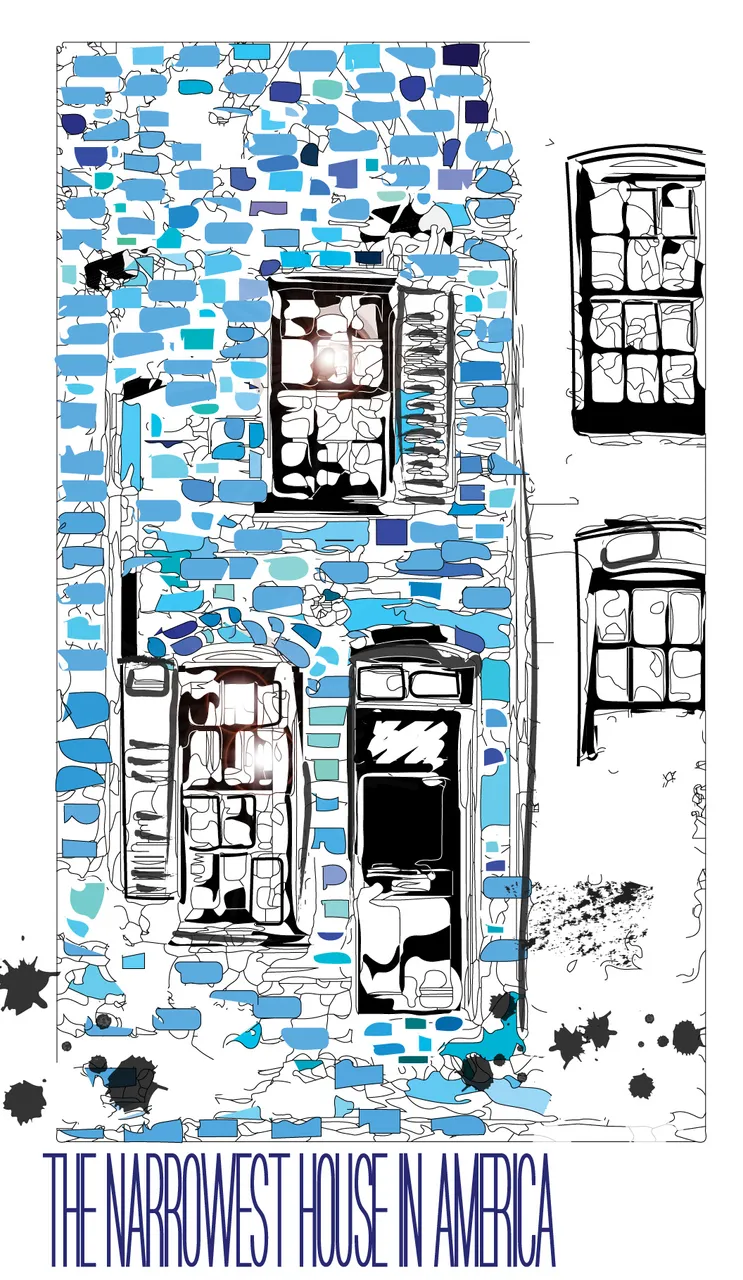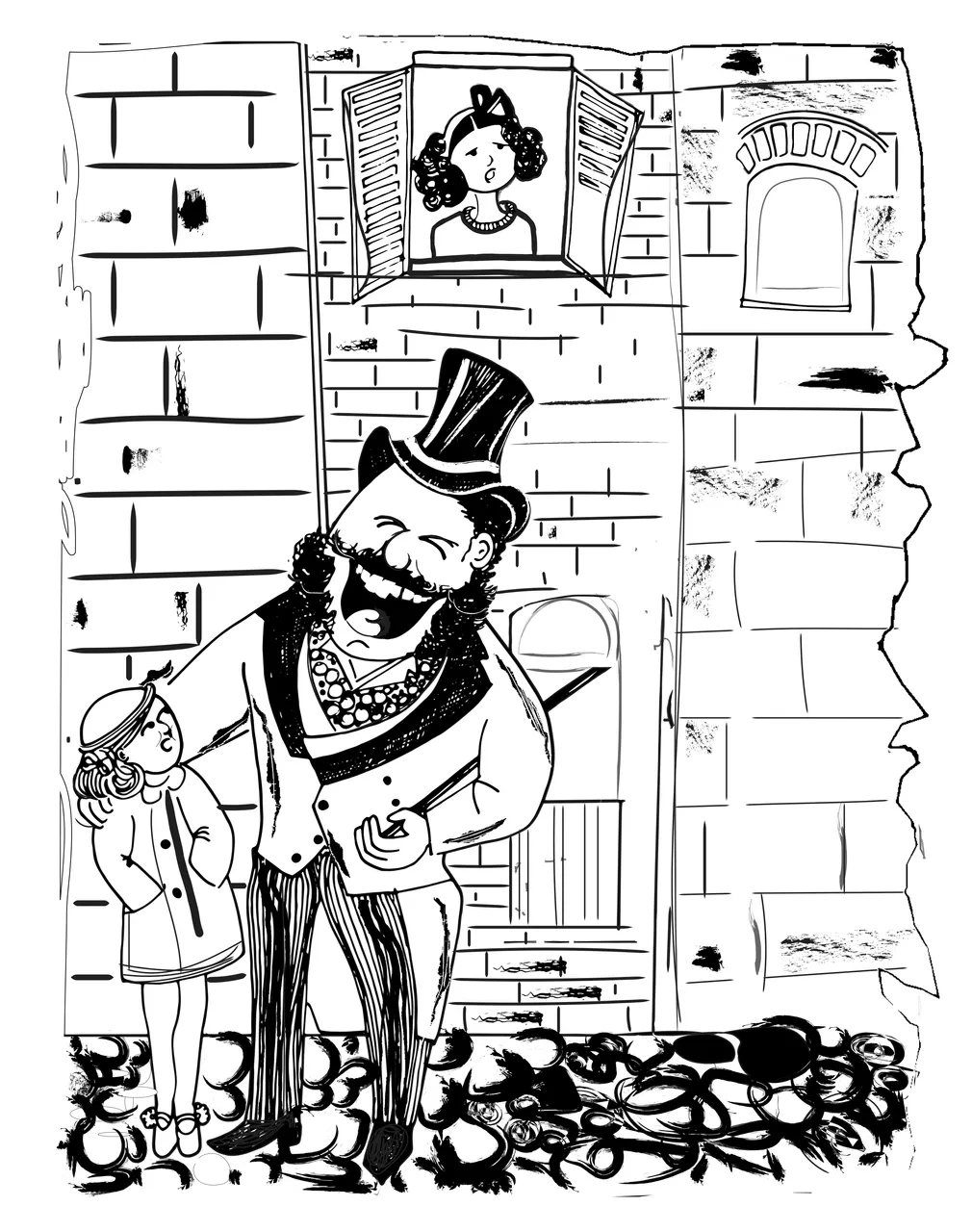
(artwork by scribblendoodle)
The blue house at Old Town Alexandria abounds with secrets. At seven feet wide, thirty-six feet tall and sandwiched between one red and another white house, the house is the narrowest house in America and although cutesy, John Hollensbury built the house, out of spite.
As legend has it, Hollensbury’s backstreet attracted horse-drawn wagons and other passers-by. To keep the loiterers away, Hollensbury enclosed the space and constructed a playhouse for his daughters Julia and Harriett. It was Hollensbury’s way of saying, “get off my property”.
One humid afternoon, after completing a project at my first corporate job, I wanted to go see the house. The blue house was the first place I had wanted to visit after graduating and landing my first job in America.
The blue house did not seem like a place locals visited multiple times, or a place to brag about in retrospect, or to post on Facebook and roll up a small fortune of likes. The little blue house seemed a to-do but not an iconic hyped about must-see on travel bustle channels.
Old Town Alexandria is about ten miles away from where I worked. I had two options of commute: a bus to the metro station, and from the station another bus to my destination or I could drive. I chose to drive.
At Old Town Alexandria, I could do a two-hour free street parking or pay a $5 fee per hour for another spot. I saw an empty parking space on Pendleton Street and took it.
I walked to the end of Pendleton St and before I made a left on N Washington St, as if somebody took a wet sponge and squeezed it right above my head, it had started, out of nowhere, to pour. I felt a pang of regret for not checking the weather earlier. I saw a sheltered bus stop, ran toward it and sat on a bench.
The weather app on my phone with fifty percent certainty said it would stop raining in half hour, so I waited. While I did, I watched my smart phone die. Beside me, an elderly woman called to check if her granddaughter had taken out the trash and done the dishes. A gentleman stared at the quaint shops across the street and I resorted to gazing at a cobweb collecting water droplets.
After ten minutes, parts of the street bounced light. It had stopped raining. I got up to walk to the house. Since my cell phone died, and I could not look up the walking directions, I asked a stranger at the end of Princess Street if she knew the route to the blue house.
“Oh, the blue house,” the stranger said, “Walk two blocks down the road. Make a left on Queen Street and it’s the second house on the left.”
Before the smiling stranger left, she added, “That blue house, it’s cute as a button. You can’t even fit a couch in there sideways. And don’t knock. It’s not a museum, you know. Somebody actually lives there.”
“Oh thanks for the tip. I was not going to knock but who knows. Now I know I won’t,” I smiled and walked on.
Princess Street was paved with cobblestones. A marker indicated most streets in the 1790s of Old Town Alexandria were paved with cobblestones, and that Hessian soldiers cobbled the streets. The cobbles were untouched until 1979 and then restored using the original cobbles.
On Queen Street, the blue house was right where the stranger had said it would be. At first it was something like those see-if-you-can-spot-it games where you’re competing with your cousin, and you feel rewarded and accomplished if you can spot it before your cousin.
Then, it was something like nostalgia mixed with wonder at how I got to that point, place and time. I had lived in America for a year and a half, read about many other places but had not wanted to visit any of them as much, waited at a bus stop for the rain to stop, had my phone die on me, asked a stranger for directions and then an hour later, I found myself standing in front of the narrowest house in the nation, wondering if pixies lived there.
As I stood on the brick sidewalk observing the blue sliver, Hollensbury’s story became real for me. I wondered what life was like for Hollensbury 200 years ago, imagined him walk down the cobbled streets and brick sidewalks in his boots and tall hat. For three whole minutes, I imagined the loiterers and horse wagons making him upset and getting into his property. I imagined he tossed at night when the epiphany to build a blue house struck, soothing his pains and worries. I imagined Hollensbury, the man with solid boundaries, to have had the last laugh.
Before I headed back to my car, I listened to the sounds of horse hooves amidst cars.
